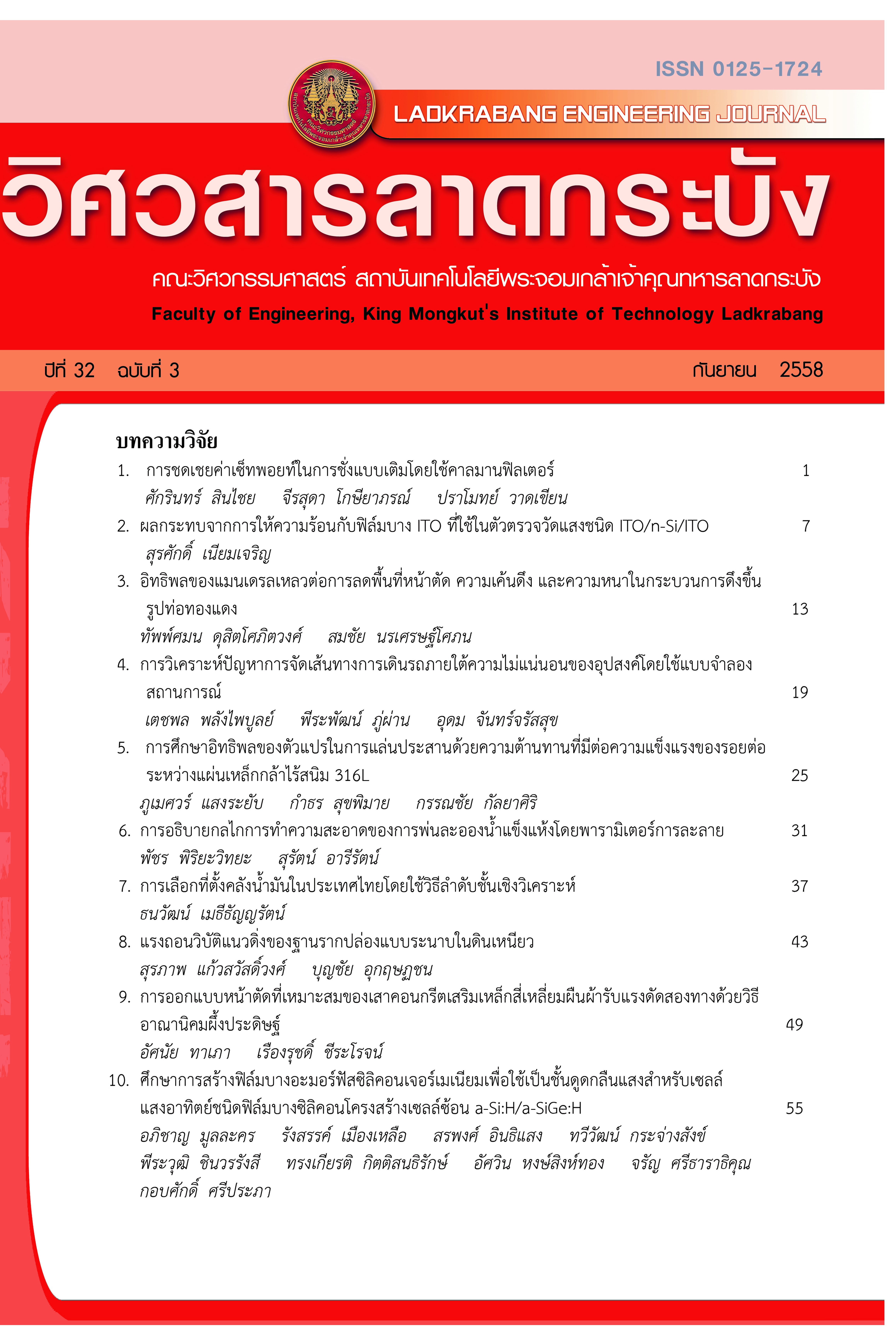Analysis of Vehicle Routing Problem Under Demand Uncertainty Via Simulation
Keywords:
Vehicle Routing Problem (VRP),, Simulation, Uncertainty,, Transportation Cost,, Service LevelAbstract
This paper presents analysis of the vehicle routing problem with demand uncertainty. The objective is to study the effect of demand uncertainty on transportation cost and service level. We developed a simulation model of the vehicle routing problem to simulate the demand uncertainty. Sampling technique was used in the simulation for different types of demand distributions including normal distribution, uniform distribution, and triangular distribution. Computational experiment was conducted with 25 instances from literature by varying the coefficient of variation and interval of demand. The results showed that slightly changes in demand could cause the transportation cost to increase significantly and the service level to decrease. The results of this research are beneficial for supporting the decision making on reducing transportation cost and improving service level.
References
[2] Dimitris J. Bertsimas, “A vehicle Routing Problem With Stochastic Demand,” Operation Research Society Of America,Vol. 40, No. 3, pp. 574-585, May-June 1992.
[3] Li Jiang, Hongyan Wang, and Bin Ding, “Disruption Management Recovery Model of Distribution Delay with Service Priority,” Asian Social Science; Vol. 9, No. 2; pp 170-179, 2013
[4] Vahid Mahdavi Asl, Seyyed Amir Sadeghi, Soheil Fathi, “A mathematical Model and Solving Method for Multi-Depot and Multi-level Vehicle Routing Problem with Fuzzy Time Windows,” Advances in Intelligent Transportation Systems Vol. 1, No. 1, pp.19-24, March 2012
[5] M. Fisher. Vehicle routing. Handbooks of Operations Research and Management Science, Chapter 1, 8:1-31,1995.
[6] Abdul Kadar Muhammad Masam, Muhammad Shahjalal, Md. Faisal Faruque, and Md. Iqbal Hasan Sarker, “Solving the Vehicle Routing Problem using Genetic Algorithm,” (IJACSA) International Journal of Advanced Computer Science and Applications,Vol. 2, No. 7, pp. 126-131, 2011.
[7] Angel A.Juan, Scott E. Grasman, Javier Faulin, Daniel Riera, Carlos A. Mendes, and Bernardo Ruiz, “ Applying Simulation and Reliability to Vehicle Routing Problems with Stochastic Demands,” Experimental Evaluation of Algorithm for Solving Problems with Combinatorial Explosion Reggio Emilia, Italy, 12 December 2009.
[8] R. Liu and Z. Jiang, “The close-open mixed vehicle routing problem,” European Journal of Operational Research, vol. 220, pp. 349-360, 2012.
[9] X. Li, S. C. H. Leung, and P. Tian, “A multistart adaptive memory-based tabu search algorithm for the heterogeneous fixed fleet open vehicle routing problem,” Expert Systems with Applications, vol. 39, pp. 365-374, 2012.
[10] P. Augerat, J.M. Belenguer, E. Benavent, A. Corberán, D. Naddef, G. Rinaldi, Computational Results with a Branch and Cut Code for the Capacitated Vehicle Routing Problem, Research Report 949-M, Universite Joseph Fourier, Grenoble.
Downloads
Published
How to Cite
Issue
Section
License
The published articles are copyrighted by the School of Engineering, King Mongkut's Institute of Technology Ladkrabang.
The statements contained in each article in this academic journal are the personal opinions of each author and are not related to King Mongkut's Institute of Technology Ladkrabang and other faculty members in the institute.
Responsibility for all elements of each article belongs to each author; If there are any mistakes, each author is solely responsible for his own articles.






